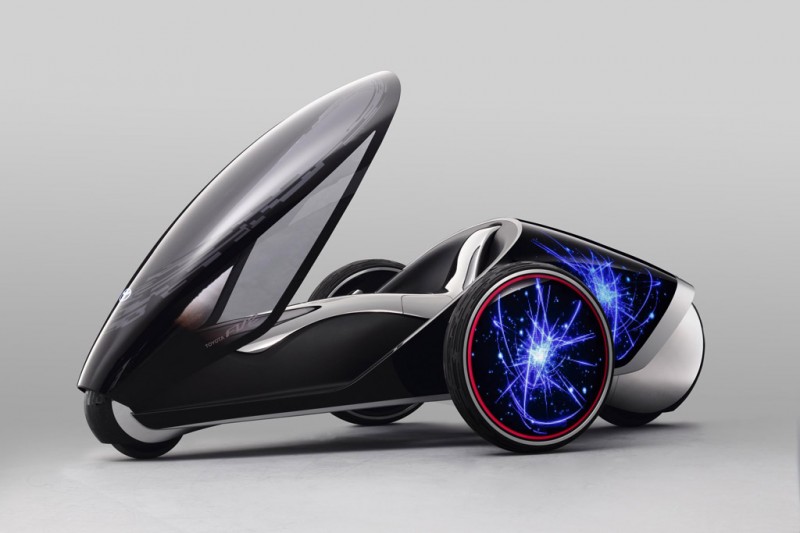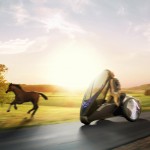Toyota’s weird but somehow intriguing FV2 concept makes its debut at the Geneva Motor Show. The innovative concept is, in our opinion, a bit like an advanced Sinclair C5 – and we don’t mean that in a derogatory way either. The Sinclair C5 might be the brunt of many a joke now, but to be able to envision the future of mobility is an incredibly difficult thing for anybody to get correct. Sinclair got it wrong, but it was brave to try. Similarly, Toyota’s FV2 concept aims to show what the future of travel could hold.
Lacking any steering wheel, instead the FV2 is steered by the drivers’ movement, much like a Segway. Not only that, but the FV2 connects with nearby vehicles and highway infrastructure, for example, to give advance warning of vehicles in blind spots or at junctions and to capture safety information.
Toyota believes the relationships between drivers and their vehicles will continue to develop aspects of trust and understanding, similar to those a rider will have with a horse. It has taken technology from the Toyota Heart Project to allow the driver and FV2 to develop a relationship. The vehicle uses voice and image recognition to determine the driver’s mood; it can use accumulated driving history to suggest destinations; and can present driving skills information to assist the driver. An augmented reality (AR) display can be presented on the windscreen and the body colour and exterior display can be changed at will.
The Toyota Heart Project
The Toyota Heart Project is a new communication research project developed under the theme ‘Inspiring the Heart, Inspiring You’.
Basing its research on a unique, ‘open innovation’ method, the project envisages a future in which, in addition to simply talking and listening, humans and artificial intelligence will be able to engage in emotional communication which includes the use of expressions and gestures, and the recollection of past events.
Toyota’s Kirobo and Mirata humanoid communication robots, which incorporate technologies for communication and artificial intelligence, are part of this research project.
Source; Toyota




